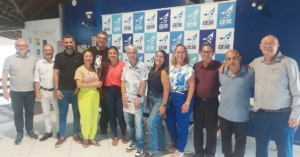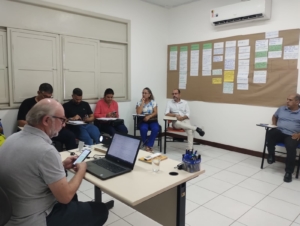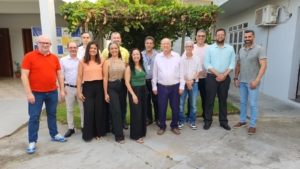 The Northern Brazilian state of Bahia faces deep-rooted socioeconomic challenges, with high unemployment (2nd highest rate after Pernambuco), a bulging informal employment market (50% of jobs are informal vs 39% national average), and a large Afro-descendant population (>80% self-identify as Black or mixed-race) that is disproportionately affected by poverty. In Bahia, microfinance is more than a tool, it’s a lifeline for thousands of micro-entrepreneurs and smallholder farmers disconnected from traditional financial services. It is this context where new ECLOF member ABOMCRED (Associação Baiana das Organizações de Microfinanças e Microcrédito) operates.
The Northern Brazilian state of Bahia faces deep-rooted socioeconomic challenges, with high unemployment (2nd highest rate after Pernambuco), a bulging informal employment market (50% of jobs are informal vs 39% national average), and a large Afro-descendant population (>80% self-identify as Black or mixed-race) that is disproportionately affected by poverty. In Bahia, microfinance is more than a tool, it’s a lifeline for thousands of micro-entrepreneurs and smallholder farmers disconnected from traditional financial services. It is this context where new ECLOF member ABOMCRED (Associação Baiana das Organizações de Microfinanças e Microcrédito) operates.
With support from ECLOF International and ABCRED, the national association of Brazil’s non-profit microcredit movement, ABOMCRED has launched a forward-thinking strategic planning initiative with its four member institutions: CEAPE Bahia, CEADE, ICC Itabuna Solidária, and ICC Conquista Solidária. This collaborative effort is designed to strengthen ABOMCRED’s overall microfinance operations. It focuses on enhancing governance, building institutional capacity, and ensuring long-term sustainability.
The journey began with a general meeting where stakeholders came together to align on shared goals. From there, each microfinance institution took the lead, drafting personalized strategic plans tailored to their regional uniqueness and challenges.
To support this effort, regional workshops were later held and led by an external consultant, bringing together leaders for engagement, fresh insights, and collaboration. Participants refined practical strategies while reaffirming their shared commitment to ethical financial services that promote human dignity and advance social justice. This workshop was supported by our partner the Bread for the world. This initiative is not about planning, it’s about purpose of empowering vulnerable. By strengthening access to inclusive microcredit, ABOMCRED members are setting the stage for lasting change in Bahia’s most underserved regions. It is a testament to what’s possible when institutions invest in both vision and values.
This initiative is not about planning, it’s about purpose of empowering vulnerable. By strengthening access to inclusive microcredit, ABOMCRED members are setting the stage for lasting change in Bahia’s most underserved regions. It is a testament to what’s possible when institutions invest in both vision and values.




